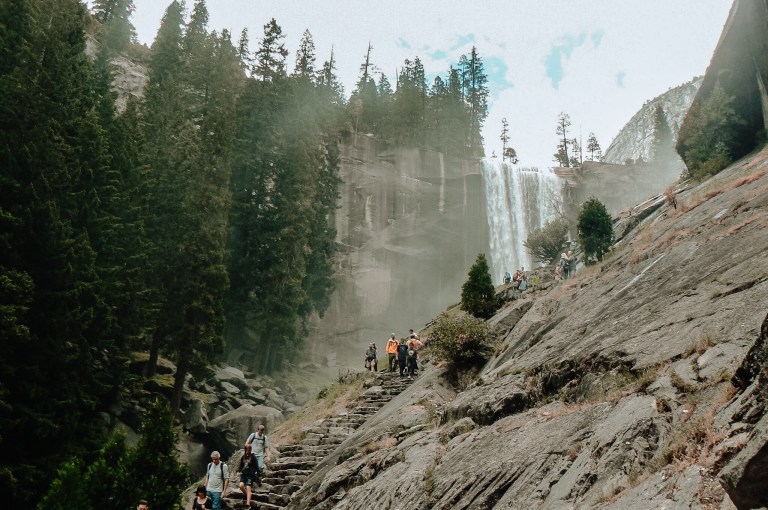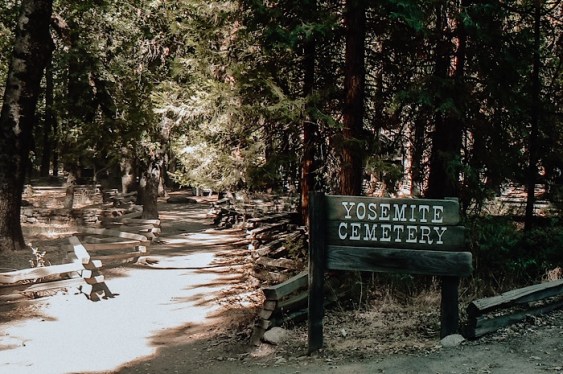Having been to Joshua Tree National Park several times, I know a good packing list can come in handy. Every visit I have done to Joshua Tree has been via road trip, so I’ve included lots of road trip packing list items below as well. And depending on whether your camping in the park or staying at a nearby Airbnb or hotel, there are different items that will need to be on your list. Browse my comprehensive list of thing to bring to Joshua Tree below, including what to pack for the car, what to bring on a hike through the park, and camp necessities for spending a night under the stars.
This article contains affiliate links. If you use these links to buy something I may earn a commission. For more info, please see my affiliate disclaimer.

Packing List for the Road Trip to Joshua Tree
The road trip to Joshua Tree is the first part of the vacation, so you want to make sure you’re off to a smooth start. Everyone is a bit different in terms of what they need to keep in the car, but here are some essential packing list items to get you started:
Comfort Items for your Car
- Driver’s seat: If you’re going to be sitting a long time, consider a seat belt cover to protect your shoulder, or a lumbar back support pillow that attaches to the seat.
- Nap time: If you’ve got passengers looking to take a nap, be sure to grab one of these twisty neck pillows and some silk sleep masks for the family. Earplugs or headphones are always a great idea for any Joshua Tree Packing List.
- Blankets are always a must, whether you’re planning to sleep in the car or if you just have passengers who tend to get cold. A simple throw blanket is always a good thing to keep in the back seat.
- Overnight: If overnighting in your car on the way to Joshua Tree, browsing these blow up car mattresses may be a good choice.
Car Organization and Storage for Your Road Trip
A key factor to ensuring a smooth road trip is good organization. Your Joshua Tree packing list should include plenty of items to bring, but also plans on where to store them and how to organize them in the car. Here are some essentials for keep everything in place.
- Front Seat: Seat gap organizers are a nice way to fill unused space and also keep things from slipping through the seat gaps.
- Back Seat: Seat back organizers are great whether you’re traveling solo or with friends and family. They are easy to reach from the driver’s seat, or they are great easy storage for back seat travelers. Hanging seat back trash cans are essential as well for keeping the car nice and clean.
- Trunk: The trunk is a great space you can really optimize. I recommend this large organizer that extends across your back seat row, or these smaller collapsible trunk organizers.


Car Safety and Other Misc Items to Pack
When creating a Joshua Tree packing list, it’s always important to remember the safety items. At times, you may be out in a remote desert area, so it’s always best to be prepared. And there are some other miscellaneous and fun car items for your packing list here as well.
- First Aid: A first aid kit is a must have for your car.
- Roadside Emergencies: Keeping a roadside emergency kit in the car is great idea, as well as an emergency power station, just in case.
- Powering Electronics: If you need more USB ports in your car, be sure to bring a USB 4-port power converter. Car power converters exist with regular US electronic outlets if needed.
- Fun Stuff: Be sure to throw in some fun items as well, like a road tripping t-shirt or a road trip game.
Packing List for Inside Joshua Tree National Park
Joshua Tree National Park is massive, so if you’re planning on driving through it or well into the middle of it, it’s best to make sure your packing list is ready and you have everything you need. Below I’ve listed some basic items to bring hiking, as well as some camping items for when you’re staying overnight at one of the park campgrounds.

If Taking a Hike in Joshua Tree National Park
There are a lot of great hikes in Joshua Tree National Park, ranging from easy-paced to strenuous. Depending on the type of hike you’re planning to do, you may need any or all of the following items.
- The right backpack: Be sure to get a lightweight hiking day pack pack if going out for a long trek. An insulated cooler backpack may be best if heading out for a picnic lunch, or you may want to go all in with a picnic supplies backpack, which includes a picnic blanket and an insulated cooler wine pouch.
- Plenty of water: Always add plenty of water to your Joshua Tree packing list. I recommend a hydroflask to keep your water cool and a can cooler to keep your canned beverages cool. To flavor up your water and make sure you get plenty of electrolytes, these electrolyte drink tablets are lightweight to pack and great for dropping into your water bottle.
- Sun protection: Be sure to bring sunglasses, and protect your face with a baseball cap or fishing hat. Pack plenty of sunscreen, and don’t forget to pack sunscreen made for your face, and a good SPF lip balm.
- Clothing made for desert hikes: Be sure to dress appropriately for the desert. Wear lightweight, breathable fabric and sturdy shoes. Hiking shoes are recommended, and preferably long pants to protect your legs from cacti, shrubs, and snakes.
- First aid kit: A small first aid kit is always recommended for any Joshua Tree packing list, esecially if out for a hike. Scrapes, bites, or accidents are never expected, but it’s always best to be prepared.
- Tech items: A back up power bank is a great idea in case your phone or other equipment needs a charge. A compass carabiner is a great tool to clip on your bag just in case. A chargeable pocket fan is fun for keeping cool while on the go, and a GoPro Camera is an exciting way to improve your Joshua Tree hiking photography.
Packing List for Camping at Joshua Tree National Park
There are several awesome campgrounds to choose from inside Joshua Tree National Park. Be sure to research the campground ahead of time to see which necessities you will need. Below are some camp sleeping and kitchen basics to get you started.

Campground Sleeping Items
- Camping tent: Depending on the size of your group, there are various sizes to choose from. I love this 6 person Coleman tent with built-in lighting and a porch. For smaller sizes, I recommend this Coleman 2 person tent with sun cover.
- Sleeping items: Sleeping bags and foldable sleeping mats, or, depending on the level of comfort your group requires, an airbed with built in pump.
- Light: There are plenty of hanging light options for inside the tent. Be sure to also bring a small flashlight or headlamp for walking around at night.
- Music: On every trip I recommend bringing a bluetooth speaker.

Campground Kitchen Items
- Camp cookware set. These heavy duty pots and pans can go over the fire. It comes with camp utensils as well. I like these sets because they all pack together nicely into one compact bag.
- Foldable camp kitchen. I think these are genius. This one contains a large, heat resistant surface, perfect for your pots and pans or camp stove. It has shelving for storage, a hook for a light, and a collapsible sink with drain. And they are easy to collapse for quick take down.
- A good cooler. I have this Coleman heavy duty cooler and keeps things cold for several days.
- Campfire roasting sticks. These are extendible and perfect for roasting s’mores or hotdogs over the campfire. One of the most fun items that I would recommend for a Joshua Tree packing list.
- Camping stove. I use this Coleman model and I love it. It has two burners and folds closed for easy packing. Be sure bring propane for the camp stove.
- Steel kettle with nesting cups. Nice for camping and hiking.
- Cooking utensils and equipment. I recommend buying one of these cookware packs with carrying case. It includes so many things like spatulas, serving spoons, knives, tongs, a cutting board, bottle opener, gloves, and spice shakers. It helps take the guessing out of what kitchen accessory items to pack for Joshua Tree.
- Paper plates if you want to limit the amount of dishes to wash.
- Eating utensils. If you’re doing to do disposable, go compostable.
- Coffee percolator that can be put over the fire. Don’t forget a pack of fun camping mugs.
- Collapsible camping sink. Also doubles as a picnic basket.
- Biodegradable Campsuds. Can be used on dishes, but is also multi-purpose and can be used on clothing, hands, or face.
- Some foldable camp chairs. These camp chairs have a built-in insulated can cooler.

Emergency and Survival Items
- Hand crank device for radio, flashlight, and charging. Great for every day use, or to keep on hand for an emergency.
- Plasma lighter. These are only needed for certain situations. They are flameless, rechargable, waterproof, windproof. Perfect for back up or survival situations.
- Lifestraw personal water filter. These are small, easy to add to your packing list, and always good to have on hand in Joshua Tree just in case.
- Multipurpose rope
- Solar generator. Acts as an emergency power station with a bright light, and AC outlet, and 4 USB outlets.
- Multi-use compact hatchet tool. Can also be used as a hammer, screwdriver, wrench, wire cutter, and pliers.
- Pack of rain ponchos for adults and kids
- Emergency thermal blankets
- Biodegradable body wipes for keeping clean
- Compact microfiber cooling towels
Pin it For Later: Joshua Tree Packing List

Explore More Joshua Tree
Planning a trip to Joshua Tree? Browse my helpful travel guides:
- Take a step into the wild west with Things to Do in Pioneertown
- Get tips on where, when, and how to Catch the Sunrise at Cholla Cactus Garden
- Get some Instagram tips with my top Instagram Spots in Joshua Tree


























































































